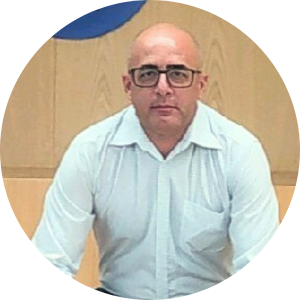Anderson Taschin is an HSE expert with over 15 years of experience, and has developed his career in the field of renewable energy. Today, we share his thoughts regarding the OHS challenges, opportunities, and innovation in the reneweable energy sector.
Drixit: What attracted you to the OHS sector and why did you decide to enter it?
Anderson: A long time ago, when I was early in my career in the electrical field, I had contact with some people in the social environment who had been injured during work activities. That bothered me because I couldn’t understand how it was part of their activities for people to get hurt. They were absent from their daily activities, had financial losses, and suffered physical, psychological, and sometimes life-threatening injuries.
It was then that I had contact with an occupational safety professional and became interested in the area, which covers behavioral, procedural, technical, discussion with professionals, constant updating, elaboration of indicators and presentations.
D: You’ve been working in an innovative industry for a long time: renewable energy. What do you see as the main OHS challenges in the renewable energy area?
A: I see it as a moment of overcoming old stigmas: the first one that the accident is part of the activity. Believe it or not, there are still people with this mindset, which I believe must be overcome.
And along with this overcoming, the opening to new knowledge, stimulus to new safe practices, innovation in the area of training and equipment (especially for work at height and confined spaces).
And finally also the question of sharing best practices in order to improve and make the work safer and sometimes faster.
D: What new technologies are shaping OHS in the renewable energy industry?
A: The technologies for working at height (lighter equipment, more resistant, easy to use) are the ones that fascinate me the most, but there is also the issue of moving loads with increasingly larger cranes, with greater capacity lifting parts higher and higher, parts with greater power generation (the technology advances very quickly, there are many people involved in R&D).
But there are also innovations in the area of working with electricity, lighter and more resistant equipment, a lot of evolution in the automation issue (which avoids contact with electricity), everything being done remotely (which is one of the points that fascinates me the most, as well as IoT).

D: What would you like to see implemented in the coming years to reduce the number of incidents/accidents?
A: It may be utopian in my point of view, but the cost of accidents should be discussed as seriously as the possible financial return on investment in renewable energy projects. Because we still measure the return a lot, but we don’t take into consideration or we underestimate the impact of accidents on the company’s image or on society.
And why isn’t it? Because process is more important than people, and behind the processes we always have people (whether operating, designing, monitoring, or feeding production lines). I would like to see life implemented first and not second or third.
There are many sustainability reports issued annually by large corporations, but the metrics cannot change (i.e. there should be equal criteria for the measurements), because many organizations record deviation in different ways or according to a certain standard.
D: What is the main barrier to incorporating innovation in OHS?
The alternative that impacts the most is still the cultural barrier, because in our country there is still a great resistance to new technologies and procedures, and the thought that “the faster, the better” instead of “the safer is better and more guaranteed to work out.
Not everyone measures what can go wrong quickly and all the impacts that this error can cause, whether on the person or on the enterprise. In the case of the enterprise, it can cause financial loss (fines that may compromise the supplier’s margin), loss of contract, or losses for the investor, who has defined deadlines to receive his investment. Not to mention the loss of prestige in being able to conduct new business, in serious places, if a fatal accident happens, the company may lose contracts or be unable to operate for more than 5 years (possibility) or even lose a million-dollar concession.
D: Could you share us some final thoughts on the renewable energy industry and innovation in the OHS sector?
A: The renewable energy industry is a way for us to strengthen our energy matrix for the future and avoid being too dependent on fossil or hydroelectric sources. I think we are exploiting the peak of construction and generation (in many places there is already a need to retrofit machines for more power, and these are not machines that have been assembled more than 8 years ago), as well as experimenting with SST innovations at a faster pace. But soon it will be a little less heated (this is talking about Wind and Solar, as we still have offshore and the possibility of green hydrogen that is more like a petrochemical plant).
But I think the important thing, beyond OSH innovations, is to implement from top to bottom the ESG issue in practice in all scenarios. Not only to look good in the market or in a report, but also to make a positive difference.

ABOUT THE AUTHOR
Anderson Taschin is an OHS expert with over 15 years of experience, working in several segments: Renewable Energy (7 years LATAM level), Wind Farms, Hydro Power Plants, Photovoltaic Plants, Factories (Food, Disposables, Electro-electronic equipment) and power distribution utility (SP).

